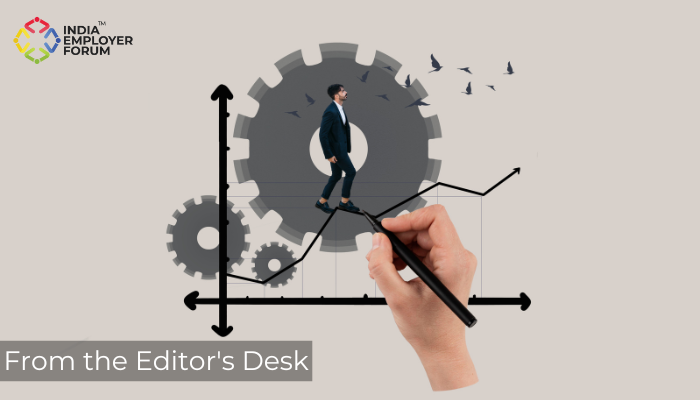Ever since India experienced its own equivalent of glasnost and perestroika post the economic liberalization of 1991, all successive governments have contributed to gradually improving the lives of common masses. Let’s move beyond the 4.5% current GDP rate. India’s per capita income was $300 in 1991. Today, it’s little over $2,000 or Rs 11,254 a month, which is a growth of 6.8%. China, which was at $333 in 1991, has leaped to over $10,000. 3.7% Indians still live below the poverty line. The real manifestation of economy is expressed in the latest NCRB report, which claims that every day ten Indians end their lives due to unemployment and poverty related reasons. The burgeoning slowdown has begun to impact the lives and psyche of common people with none of the recent booster doses showing signs of effectiveness yet. One remembers the poem ‘Second Coming’ by WB Yeats, “…..things fall apart, the centre cannot hold. Mere anarchy is lost upon the earth”. One hopes the economy doesn’t go below the present abysmal growth rate and with budget in near sight, there is another opportunity for the government to instill confidence in entrepreneurs, taxpayers and citizens by judiciously choosing prudent economics over easy-to-pick populism. Keeping the bigger picture of $5 trillion target, the government should focus on improving the lives of people. That itself will increase spending, improve quality of life, enhance spending and household expenses leading to more consumption, more production and more earnings. If the per capita goes up, the GDP growth rate will pick up.
Individual tax payers – We have seen successive governments tax the rich and honest salaried taxpayers more without offering any sops or advantages to them. This budget can revisit the higher slabs of individual taxpayers and decrease the multiple layers of surcharges to give them a level playing field. Though not certain, one hopes this group of taxpayers, who form less than 10% of the population, will utilize the saved amount post tax slab reduction and that spending leads to increase in consumption and production setting the multiplier effect in motion, eventually leading to job creation.
GST – Collection and refund are problems that need urgent attention otherwise the increasing invoice creation fraud rackets will increase. Slabs too need to be further rationalized. Petroleum products and electricity are still not covered under GST and needs to be revisited given their fickle nature and impact on inflation.
You might also be interested to read: 2019 – When Reforms Missed The Bus
Boost to sectors – Budgets have traditionally focused on sectors in their narrative. The need is more intense now with construction, auto, manufacturing along with services sector which employ around 40% of the eligible population getting impacted by slowdown. Budget should focus on pulling these sectors from the negative impact of slowdown. These core sectors provide secondary employment and sustain towns that operate around these clusters. Hopefully, the budget takes into account sops which will revive these large industries that provide large scale employment.
Disinvestment of white elephants – PSUs and corporations need to be self-sustaining. There are dozens who are surviving on public funds. Air India is the most visible as its average daily loss is over Rs 20 crore.
Labor reforms – Quick implementation of the four Labor codes needs to be a top priority. It is a major bottleneck in facilitating the ease of doing business. Code on Wages, Code on Social Security, Industrial Relations Code, and Code on Occupational Health, Safety & Working Conditions have been in various stages and the Budget should prioritize their execution to boost confidence among entrepreneurs. The government has moved forward this week in a right direction by proposing to include gig workers (by including the terms aggregator, gig worker, platform worker in the new set of definitions in the proposed Code on Social Security) in the informal sector within the ambit of health insurance, maternity benefits and disability cover by extending coverage of employee state insurance to all establishments employing ten or more employees. The proposal, endorsed by the Parliament’s Standing Committee on Labor is a progressive one.
The government’s pre-budget consultations with stakeholders – corporates, industry associations, consultants, tax experts and the general public – have been a historical practice. One hopes the exercise this year will be managed with prudent caution and relevant recommendations will be considered for inclusion in the budget with a view to taking the country out of the current state of economic slowdown.
Editor – India Employer Forum




